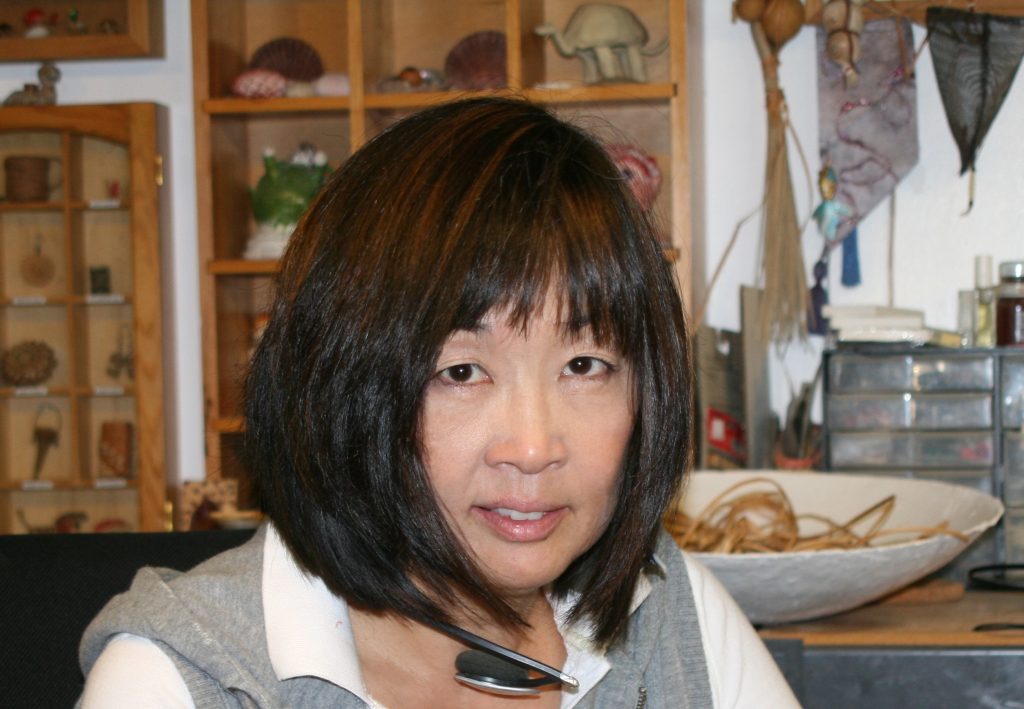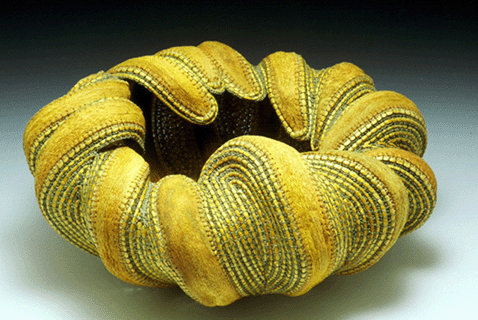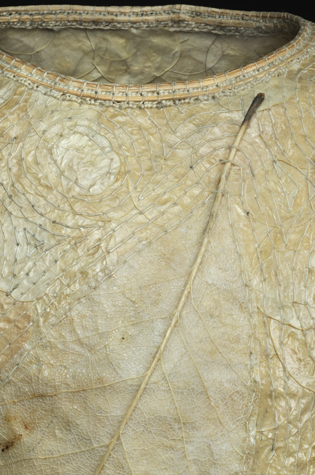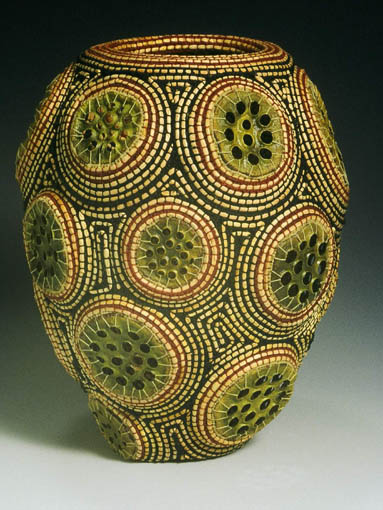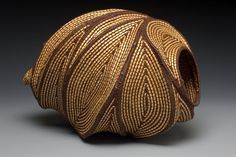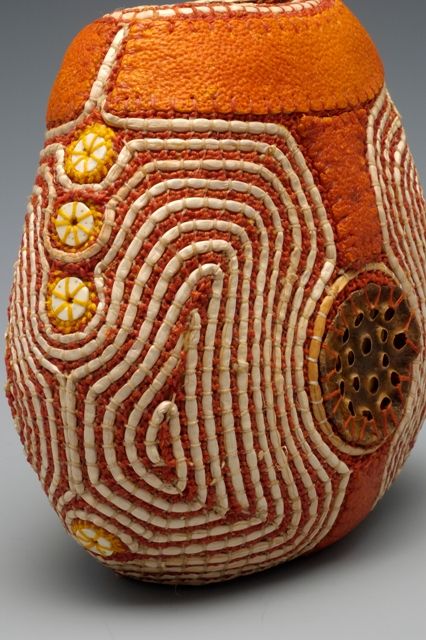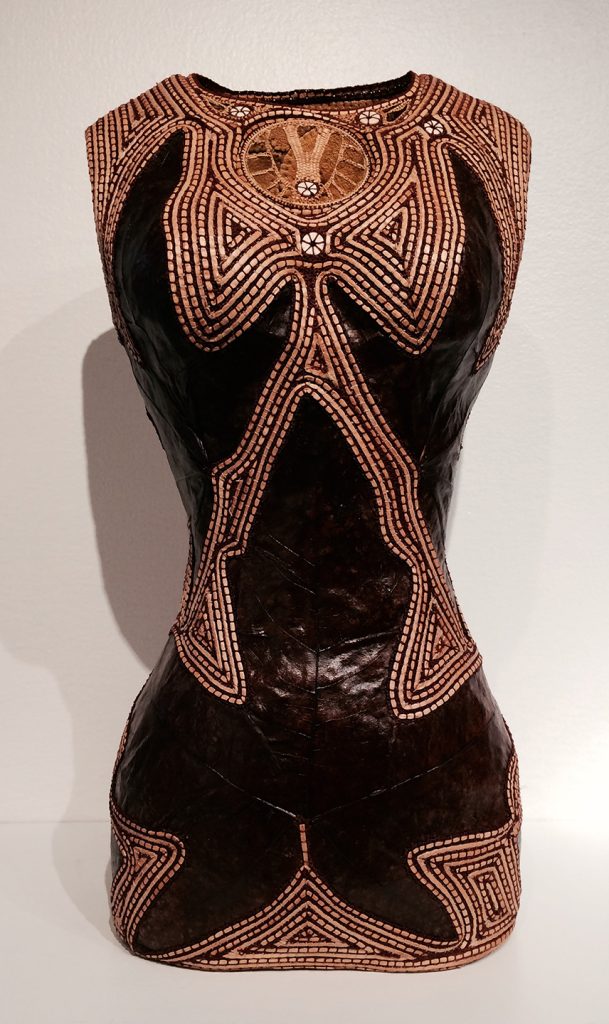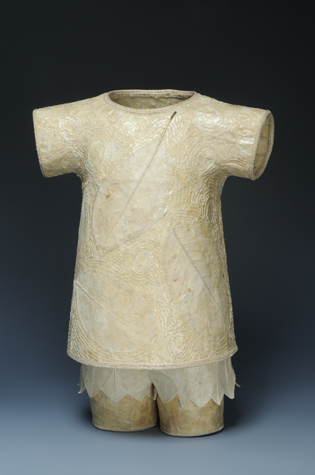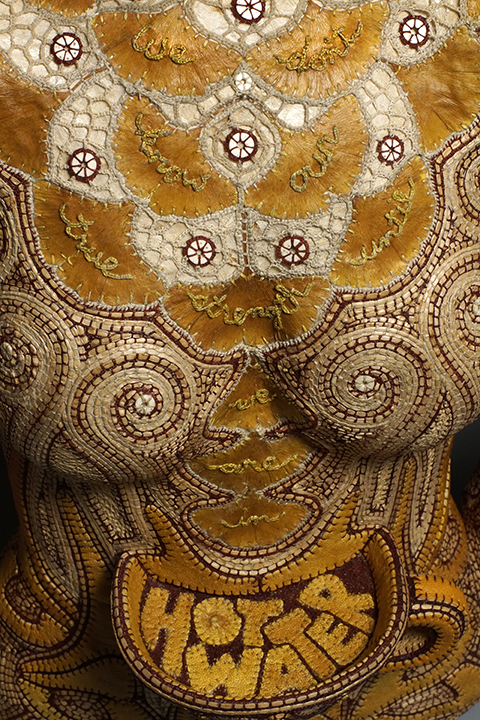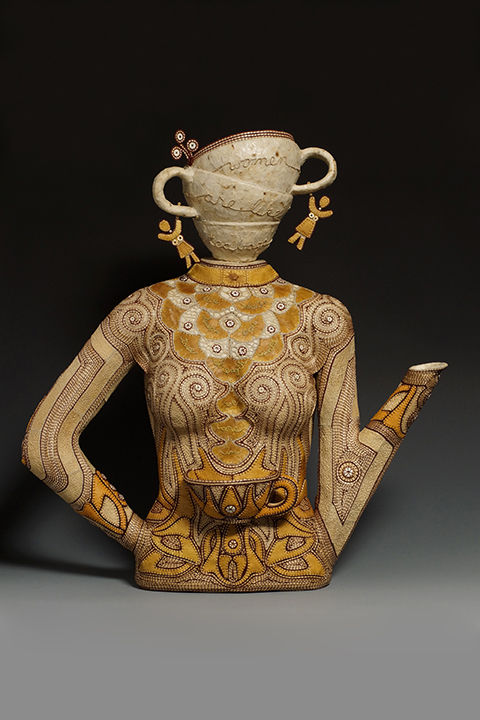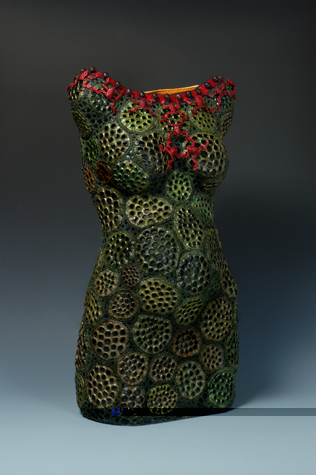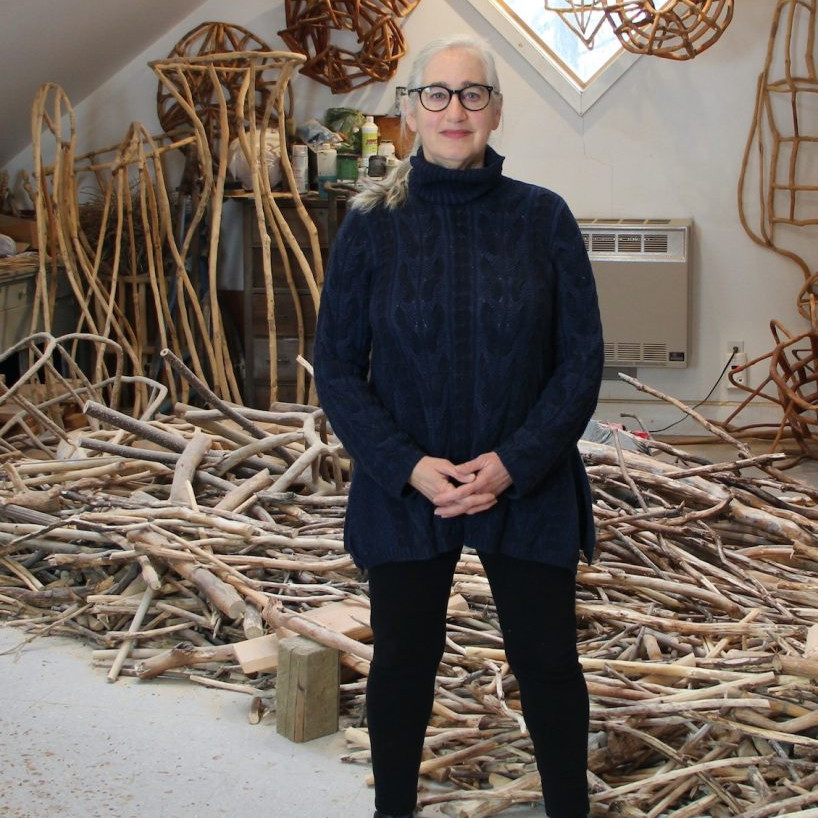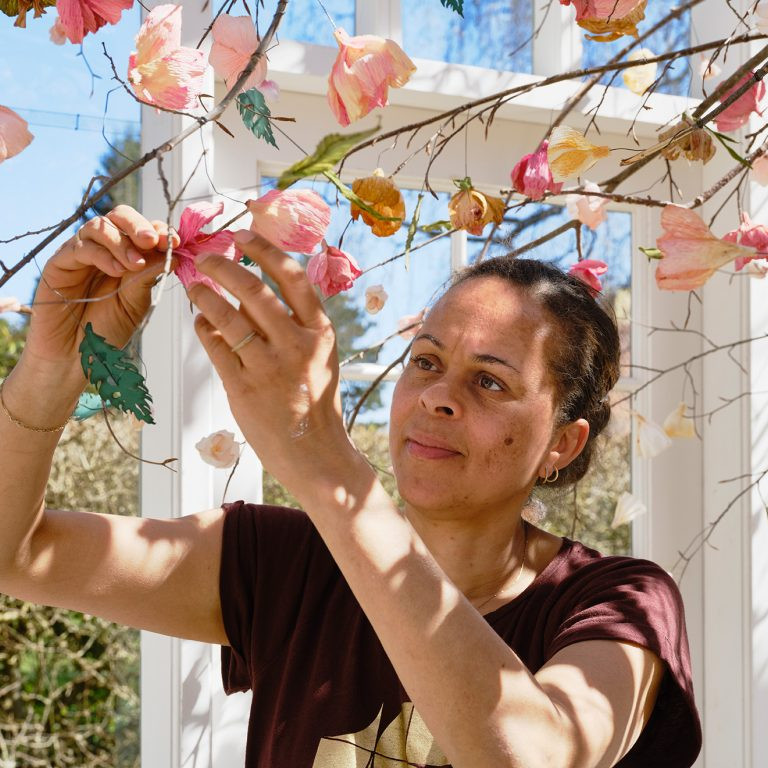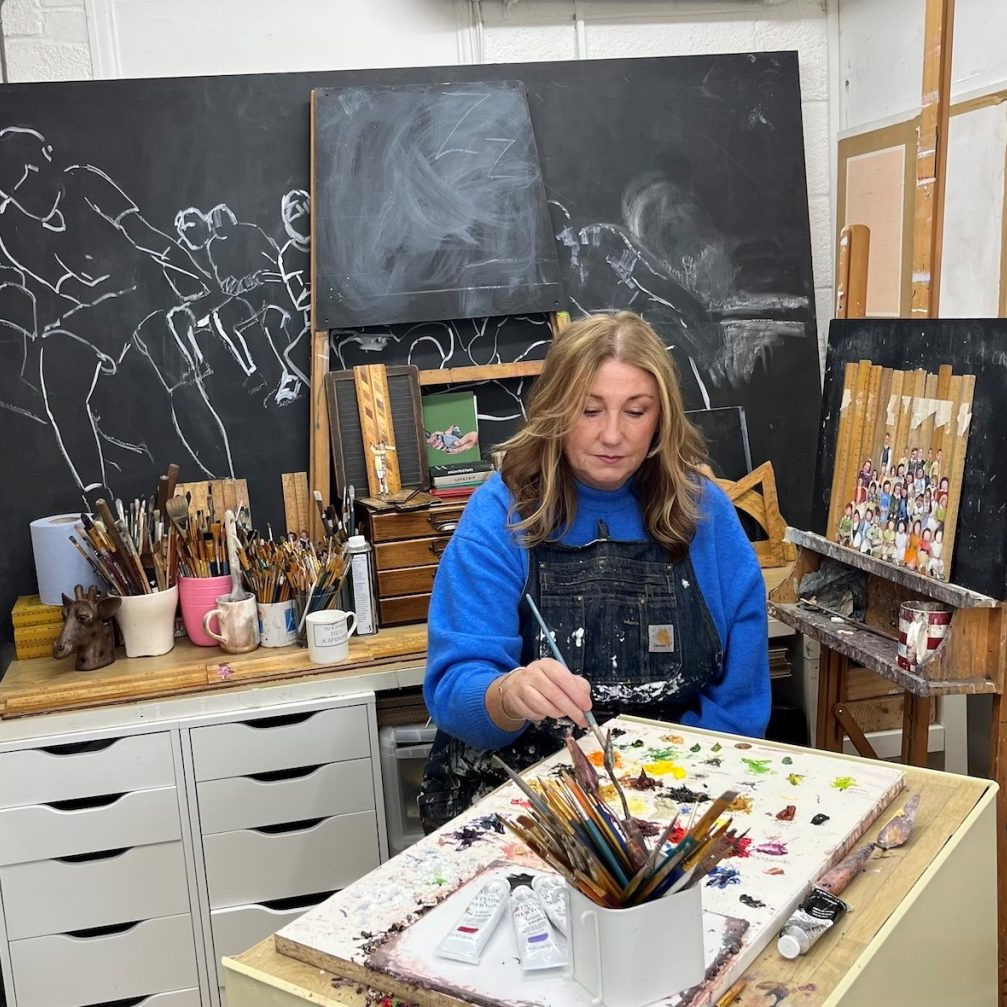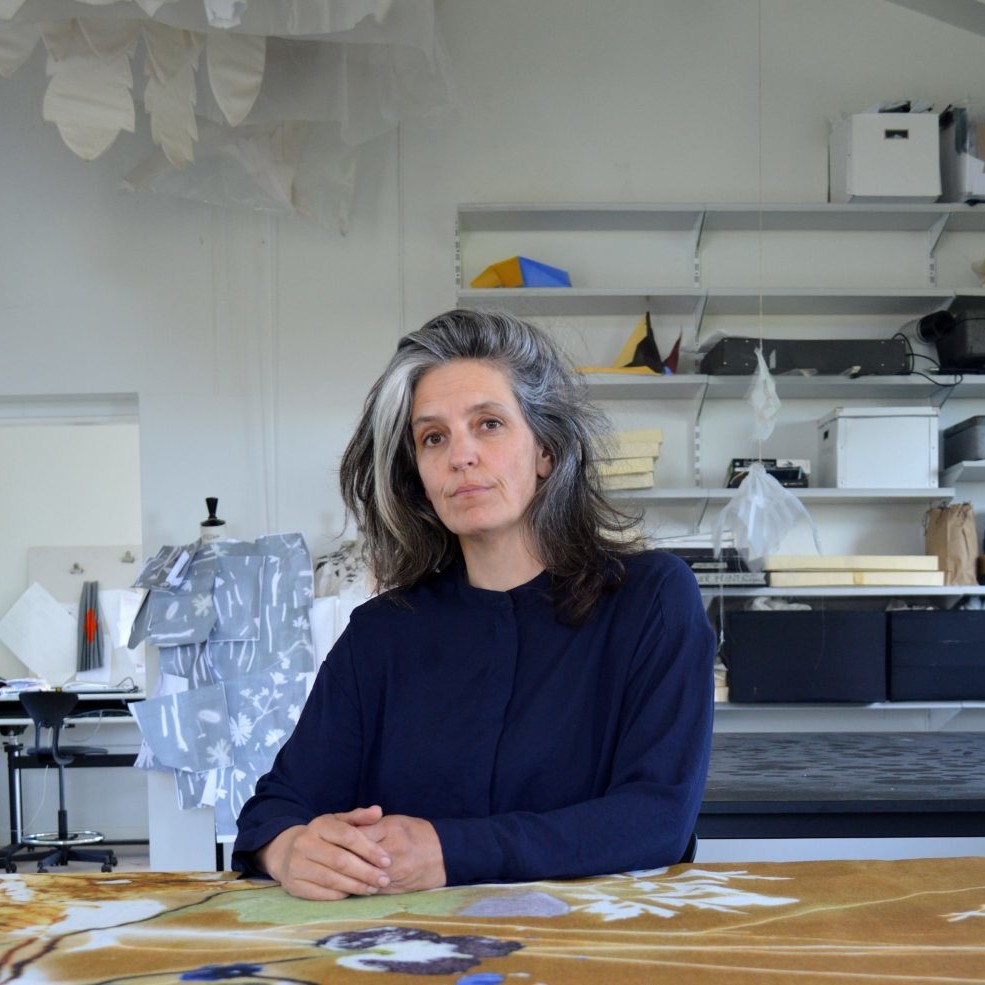Jan Hopkins Eco Artist
Can you discuss the way you continue to use organic materials such as, plant pods, flowers, and peel?
I love the challenge of finding new materials that I can use in my work. I continue to find better ways to use and preserve materials that I work with now. When you find your own materials that haven’t been used before, there are no rules that inhibit exploration.
‘Agave Within’
How does symbolism play a large part in the use of special materials in your work?
Symbolism played a larger part in my earlier work. “Young at Heart” that is described in a paragraph below is a good example. “With Child” is piece that I used Egyptian symbolism by using colour and emblems significant to life, regeneration and fertility. I used lotus seeds and lotus pod tops symbolic of rebirth, the frog symbolic of fertility and regeneration. My choice of colours are also symbolic, green to new life, red of life and victory and black of fertility and life.
‘Young at Heart’ Detail
Discuss the difference of being an urban collector is?
I think I understand your question to be; what is the difference between traditional foraging and gathering alternative materials that have been undiscovered. In many ways, they are very similar. The difference is historically, hunter/gatherers searched for the best materials to use to make clothing, utilitarian tools, vessels, etc. The materials were experimented with and processed to make articles that were needed in everyday life. I work with materials that are not ordinarily used, but that I can find in abundance.
I find ways to use them to create artwork. The materials I use do not have to stand up to utilitarian use, but I have to experiment, process and preserve my materials to be strong enough to withstand time.
‘Old – Soul’
How valuable was your reading disability to your artistic career?
With any type of disability or adversity in life, it makes you stronger. It challenges you to overcome and think differently.
What was the initial magic you saw in basket making?
Native American Baskets at the Heard Museum in Arizona caught my eye. I was fascinated by the fact that the baskets were made of grasses, roots and bark that were processed and refined to make beautiful utilitarian vessels. The moment I saw them, I felt that I needed to find out how to make them. It was an immediate passion.
You have visited museums extensively to view baskets – discuss the importance of these visits to your knowledge?
When I go to museums, I look at all types of art, but I am drawn to fibre and three-dimensional objects, not necessarily strictly basketry. Going to museums and galleries are always important source of inspiration.
Do you have a favourite museum that you know will always have a great display awaiting you?
I enjoy all types of museums, but, my favourite museums are fine craft museums that display work that I relate to.
Do you feel that this is an area that is under rated in museums collections?
Not at all, I believe that contemporary basketry has a solid place in permanent museum collections and private collections. I have been fortunate enough to be included in several museums in the U.S.
‘Vibrant’
How important is touch to your work?
As the artists?
My work is very tactile, so I would say that touch is a very important part of my work.
‘Oh Canada’
Can you discuss 4 of your works that will allow others to understand the depth of your work?
All of my work is narrative in one way or the other. In the beginning the narrative was identified by the title of the piece. As discussed previously, I delved in symbology. But my newer work includes words and quotes.
‘Tolerance’ by Jan Hopkins, photo by Ken Rowe
For instance, the pair of shoes titled “Tolerance” has the word “judge her when you’ve walked in her shoes”. The story behind this piece was about a soccer mom of three. After an unexpected divorced she had to find a way to make a living. She became an exotic dancer in the evenings so that she could care for her children during the day.
A piece from the Child torso series “Young at Heart” The piece is about aging and time. I used silver dollar pods and skeleton leaves and the time consuming quilting technique all relating to life, time and aging. The quote inside this piece is by William Butler Yeats, “The innocent and the beautiful have no enemy but time”.
‘Young at Heart’
“Oh Eleanor” is from the “Women Icon Series” and it is a homage to Eleanor Roosevelt, one of the most outspoken women in the White House, known for her intelligence and concerns for women’s issues and human rights achievements. She was an excellent speaker with a quick wit. I chose the quote: “Women are like teabags. We don’t know our true strength until we are put in hot water” to portray her personality and her ability to speak clearly to get her message across. “Oh Eleanor” is more whimsical than my previous pieces that I have created for this series and intentionally a bit sassy.
It is made part human, part teapot. The complex design is made to look like art nouveau flames moving up from the base of the piece (made of grapefruit peels) and steam coming off the flames (made of thinly stripped and stitched cedar bark). Ginkgo leaves were used to symbolize teabags dropping into the teacup. I used these on the top part of the bodice along with lopped lacy waxed linen to also visually create a period style dress form. The spout and handle (arms) design is asymmetrical to visually create the feeling of a teapot rather than arms.
‘Oh Eleanor’, photo by Ken Rowe
I worked on collaboration with my husband on a series called “Reflections”. The piece entitled “Reflections: The Dance” gave a new dimension to how I work which was more illustrative and did not include quotes or words. Chris created the paintings included in the pieces and the concept, design and organic materials was my contribution to the collaboration. The statement that I wrote for this piece is as follows: I hear the phrase “an act of nature” to describe the devastation caused by floods, tornados, hurricanes and other “natural disasters”. But, are the changes in our weather our interaction with nature. We view nature a force apart from us and struggle against it rather than being a part of it. This piece reflects a hope that we learn to become part of nature rather than be in conflict with it.
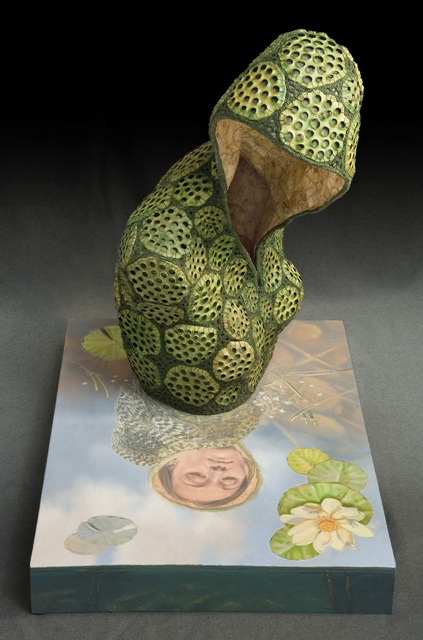
Much of your work requires hand sewing can you expand on this?
All of my work is hand sewn. My tools are paring knives, scissors, sewing needles and waxed linen thread. I have used a sewing machine on bull kelp, but I ruined my machine. Hand sewing and using the looping technique is a “signature” style that I have used over the years.
You have exhibited at SOFA (Sculptural Object Functional Art and Design Fair) in Chicago and SOFA, NYC, since 1999 expand on the importance of being able to exhibit there?
It is an International Exposition that over 30,000 art lovers and collectors attend within a 4 day period of time. It is highly competitive between the galleries and the artists that are chosen by the gallery to feature.
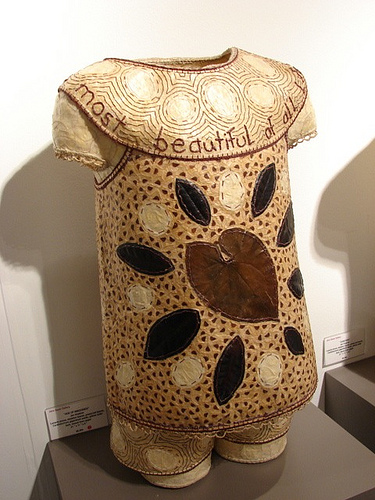
Tell us how tickets to The Lion King changed your art practice?
A friend gave my husband and me tickets to the Lion King in New York. As a child, I wanted to be a fashion designer. When I saw the costumes, I thought that costume design was my true calling in life. The next day, we went to the Metropolitan Museum of Art and viewed the Papua New Guinea basket masks. It was an epiphany for me to combine both basketmaking and fashion and that is when I decided to make figurative vessels.
How important have you found the need to balance your other life – and your art life?
Both are very important to me. It was more of a struggle when we had a houseful of children. My husband is also an artist so it was about trading off and making equal time for both artist and personal life. It is easier now that we are empty nesters. We schedule time to be together. When you do art, you get wrapped up in it. If we didn’t schedule in personal time, we would probably never see each other.
‘With Child’
Thomas Jefferson has also helped your career; with this paraphrased quote, “the harder I work, the luckier I get” expand on this?
People have often said that I am so lucky to be an artist. I have to agree, but luck really has nothing to do with it. It is many hours and hard work. Nothing glamorous, no luck involved…just passion and hard work.
Contact details.
www.janhopkinsart.blogspot.com
Jan Hopkins, Washington, USA
Interview by Deborah Blakeley, April, 2015
Think a colleague or friend could benefit from this interview?
Knowledge is one of the biggest assets in any business. So why not forward this on to your friends and colleagues so they too can start taking advantage of the insightful information the artist has given?
Other artists you may be interested in:


